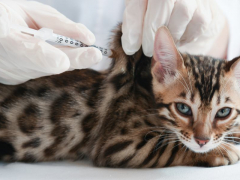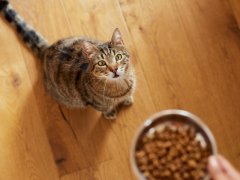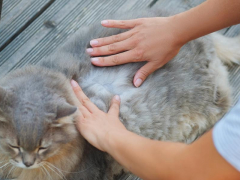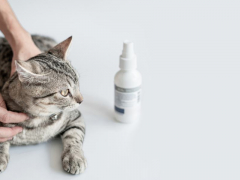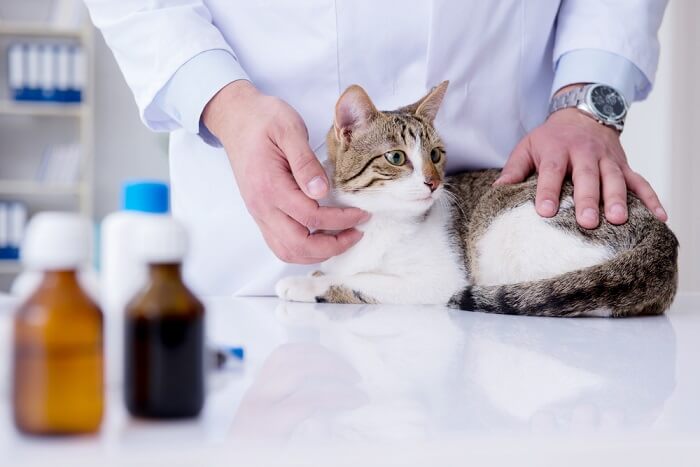
Atopica for Cats is a very specific brand of the drug cyclosporine, which is FDA-approved for use in cats. In this article, you’ll learn what Atopica for Cats is, what it’s used for, side effects and drug interactions to be aware of, and some frequently asked questions.
Atopica For Cats Overview

What Is Atopica for Cats?
Atopica is a brand name for the drug cyclosporine. Cyclosporine is a systemic immunosuppressive agent called a calcineurin inhibitor that is used to treat illnesses caused when a cat’s own immune system either directly attacks a certain body system, or becomes over-stimulated, leading to a more indirect but no less debilitating state of disease. These types of illnesses are called immune-mediated diseases.
Atopica for Cats is a very specific liquid solution form of cyclosporine that is FDA-approved to treat allergic dermatitis, a skin condition caused by the immune system’s response to allergens. Atopica may also be used for a variety of other immune-mediated diseases in an off-label manner, at a veterinarian’s discretion.
What Does Atopica Do for Cats?
Atopica for Cats is labeled for treating allergic dermatitis, also called atopic dermatitis, in cats. Commonly referred to as skin allergies, this syndrome can have several presentations, including generalized itchy skin and scratching, scabs, alopecia (hair loss), and red ulcerative lesions called eosinophilic plaques.
Cyclosporine acts directly on the part of the immune response called cell-mediated immunity. Essentially, this is the part of the immune system that does not involve antibody production, but instead the body’s direct production of T-cells to attack foreign targets like allergens.
There are other immune-mediated diseases a veterinarian may decide to use cyclosporine for in cats that don’t involve the skin. These can include diseases of blood cells like pure red cell aplasia and immune-mediated thrombocytopenia, as well as the gastrointestinal tract like inflammatory bowel disease, and the mouth as in stomatitis.
Side Effects of Atopica in Cats
Anytime we consider using a systemic immunosuppressant, we have to consider the benefits vs. the potential risks. There are several points we need to consider when starting cyclosporine.
Digestive Upset
When using cyclosporine in cats, it may be expected to see signs of digestive upset during the first month of therapy. According to the product label itself, about 35% of cats showed signs of vomiting, retching, or regurgitation. Weight loss was seen in about 20% of cats.
The good news is that these effects reportedly resolve after a couple weeks of continued therapy. Some other side effects like poor appetite, salivation, and lethargy are much less commonly reported.
Effects of Immune System Suppression
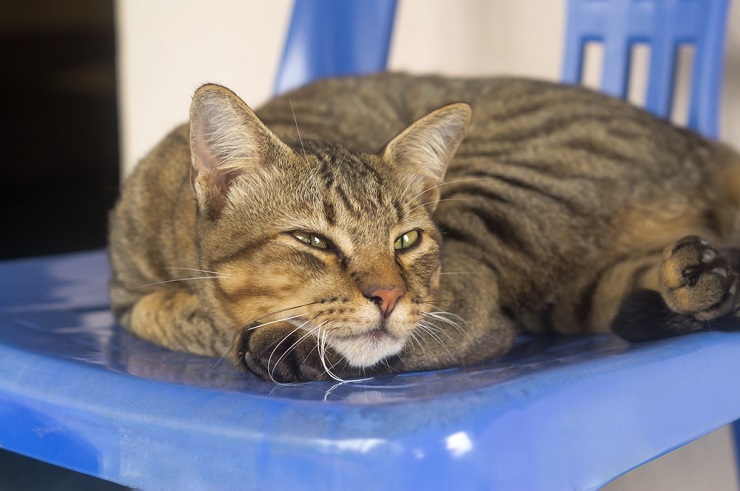
If a cat carrying toxoplasmosis is put on an immunosuppressant medication like cyclosporine, the inactive stage of the organism can become active again, causing actual disease.
Because cyclosporine suppresses the immune system, its use must be considered very carefully in light of any other health concerns a kitty has. While it can cause problems on occasion, the immune system of course is very important to general health and it can keep certain diseases in check.
Feline leukemia virus (FeLV) and feline immunodeficiency virus (FIV) are two viruses we can commonly see in the cat world that can weaken a kitty’s immune system even as it tries to keep them in check.
Suppressing the immune system further with cyclosporine use can worsen viral disease, and make a kitty more susceptible to other viral and bacterial infections that a cat with a normal immune system would easily be able to fend off. For this reason, it may be recommended to have a cat tested or retested for FeLV and FIV prior to starting Atopica long-term.
Similarly, any kitty that may have a weaker immune system for other reasons, such as an elderly cat, may also see a much higher risk of secondary infections.
Toxoplasmosis is also important to mention, as some cats can be carriers and use of cyclosporine carries a risk of it causing disease.
Toxoplasma is a protozoal organism that cats can acquire either through hunting birds and rodents or through exposure to the cysts in the environment. Once infected, most cats will only shed the organism in the stool for one period of a few days.
Cats then develop immunity to the organism, driving it into an inactive stage within the body tissues. While inactive, it is thought the organism can remain present for several years, possibly for the life of a cat. Most cats with toxoplasmosis show no signs of disease.
If a cat carrying toxoplasmosis is put on an immunosuppressant medication like cyclosporine, the inactive stage of the organism can become active again, causing actual disease.
This can pose a risk not just to a kitty, but also to her human family as well. Toxoplasmosis is the disease pregnant women need to be aware of, as it can be transmitted to people as well as to an unborn child, and is the reason a pregnant woman should avoid any exposure to the litter box for the duration of pregnancy.
It is considered very rare, but a case of a cat developing disease from toxoplasmosis after starting Atopica has been reported. Testing a cat for exposure to toxoplasmosis is possible, and while not often deemed necessary, at least for indoor cats, may be suggested by your vet depending on the circumstances.
Cell-mediated immunity is a very important component of the body’s ability to fight off cancers. Although also rare, suppressing this ability with cyclosporine could increase the risk for the development of certain cancers. To be clear, cyclosporine doesn’t cause cancer, but can allow an existing, unknown cancer to develop more readily by reducing the body’s ability to suppress it. Cyclosporine should not be used in kitties currently under therapy for known or suspected cancer.
Interactions With Medications
Lastly, cyclosporine can have interactions with a number of other medications. It’s very important to make sure your vet is aware of any other medications your kitty is taking, to reduce the risk of any possible negative effects.
While not often indicated when treating skin disease, your veterinarian may recommend lab work monitoring for your kitty when treating other immune-mediated conditions.
If you are ever concerned that your kitty may have developed side effects while using cyclosporine or if you’re concerned an overdose may have occurred, make sure to immediately contact one or more of the following for advice:
- Your veterinarian
- ASPCA Animal Poison Control Center (1-888-426-4435)
- Pet Poison Helpline (1-855-764-7661)
Atopica for Cats Dosage
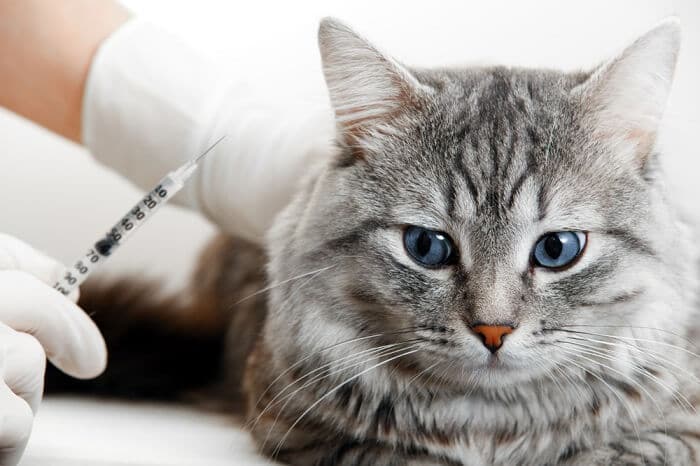
The dosage of Atopica for Cats is 7mg per kg of body weight each day.
The labeled dose for Atopica for Cats is 7 milligrams per kilogram per day or 3.2 milligrams per pound per day, and should be continued for a minimum of 4-6 weeks to determine if it is being effective.
From there, your veterinarian will typically reduce the frequency of administration, which is called tapering, to the lowest frequency that still provides the most benefits. Some cats for example, may maintain well on dosing every other day or just a couple times a week. It is very important however to only adjust a medication dose or frequency under your veterinarian’s guidance.
While cyclosporine generally can come in a couple of different dosing forms, Atopica for Cats comes in only one specific formulation as a 100 mg/ml oral solution. Because cyclosporine can present a risk to humans handling it (which we’ll discuss in the next section), the dispensing system of the bottle and oral dosing syringe are designed specifically to minimize skin exposure to the liquid.
It’s important to assemble the dispensing system correctly, using the provided packaging insert, and instructions from your vet.
How to Properly Handle Cyclosporine Products?
Although a very beneficial medication, the immunosuppressive effects of cyclosporine necessitate very careful handling by human family members administering this drug to kitties.
The dosing assembly of the bottle and syringe for Atopica for Cats is designed specifically to limit exposure of the skin to the liquid medication, however using gloves is recommended for dosing, especially if giving it directly into a kitty’s mouth vs. mixing it with some food.
The manufacturer advises washing your hands after administration but recommends not washing or rinsing the oral dosing syringe after use, to limit exposure.
Gloves should certainly be worn when giving any other forms of cyclosporine too, like other liquid formations or capsules.
Modified vs. Unmodified Cyclosporine: What’s the Difference?
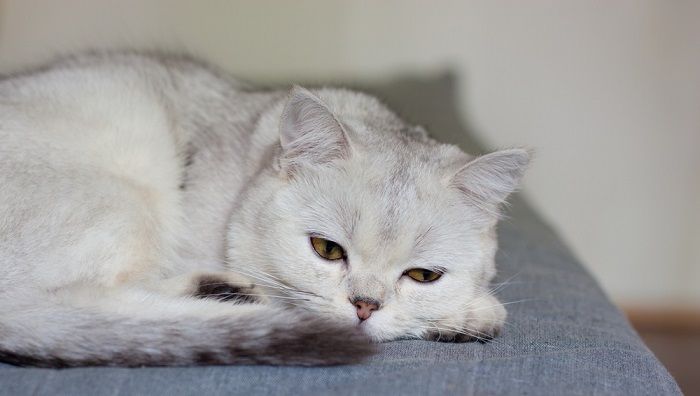
Your veterinarian will discuss the benefits and risks to Atopica’s use specifically for your kitty depending on other medications he may be on or other health concerns that may exist.
There are two general forms of cyclosporine that exist: modified and unmodified. Unmodified cyclosporine is kind of its original form, but this form is far less bioavailable and can’t be used as efficiently by the body.
The modified form is much more effective, especially in cats and dogs. It’s important to know this, because the dosing for unmodified forms of cyclosporine, like the brand Sandimmune, are not equivalent to modified forms like Atopica and Neoral.
This is especially important when looking into generic forms of cyclosporine as well as when a compounded formulation of cyclosporine may be needed.
Conclusion
Cyclosporine in the form of Atopica for Cats is a very beneficial medication. However, because it does suppress the immune system, there are many precautions that need to be taken and considered with its use.
Your veterinarian will discuss the benefits and risks to Atopica’s use specifically for your kitty depending on other medications he may be on or other health concerns that may exist.
Drug Dosing Disclaimer: We are only able to provide doses for medications that are FDA approved for use in cats and only as the label guidelines dictate. For medications that are used off-label we can only provide guidelines and safety information for use. Safe and appropriate dosing for off-label medications can only be determined by a primary care veterinarian.
We encourage you to work with your veterinarian to determine if a particular medication is appropriate for your cat. Changing or adjusting a dose for your cat on your own without consulting with a veterinarian can carry risk. We do not encourage use of medications prescribed for human use in pets without first consulting with a primary care veterinarian.
